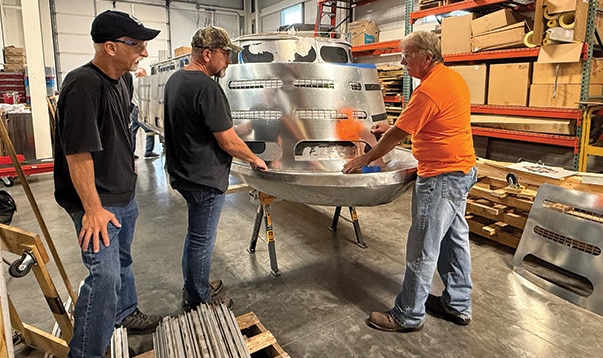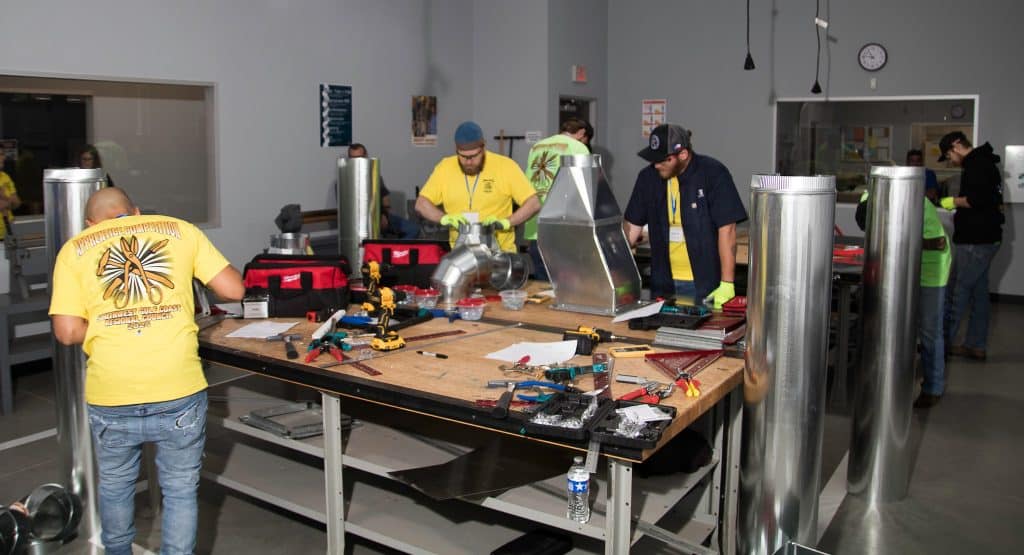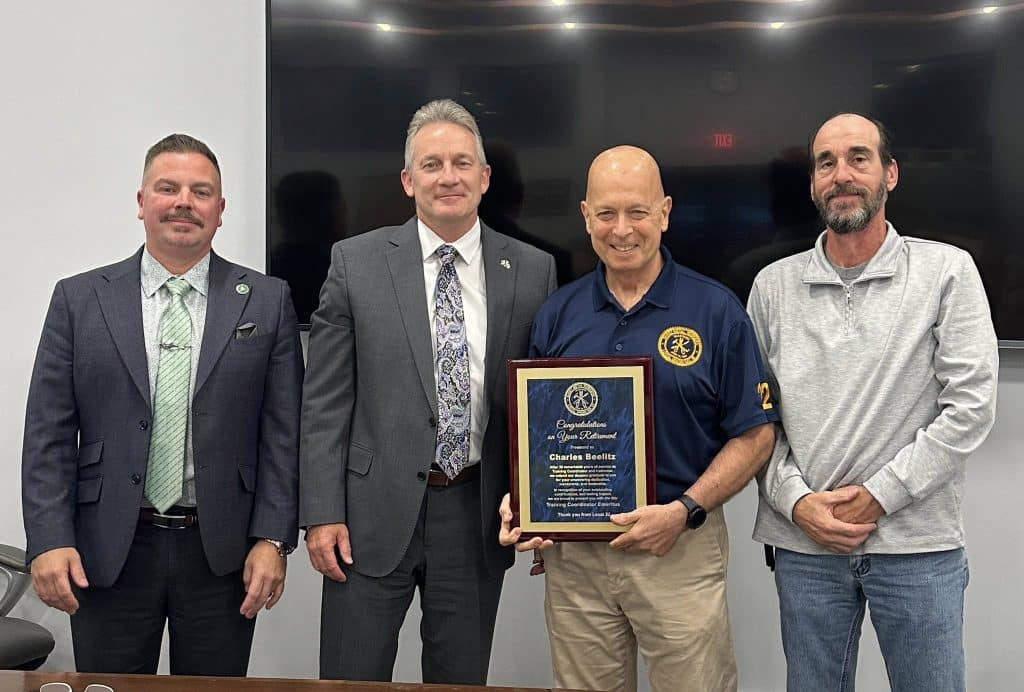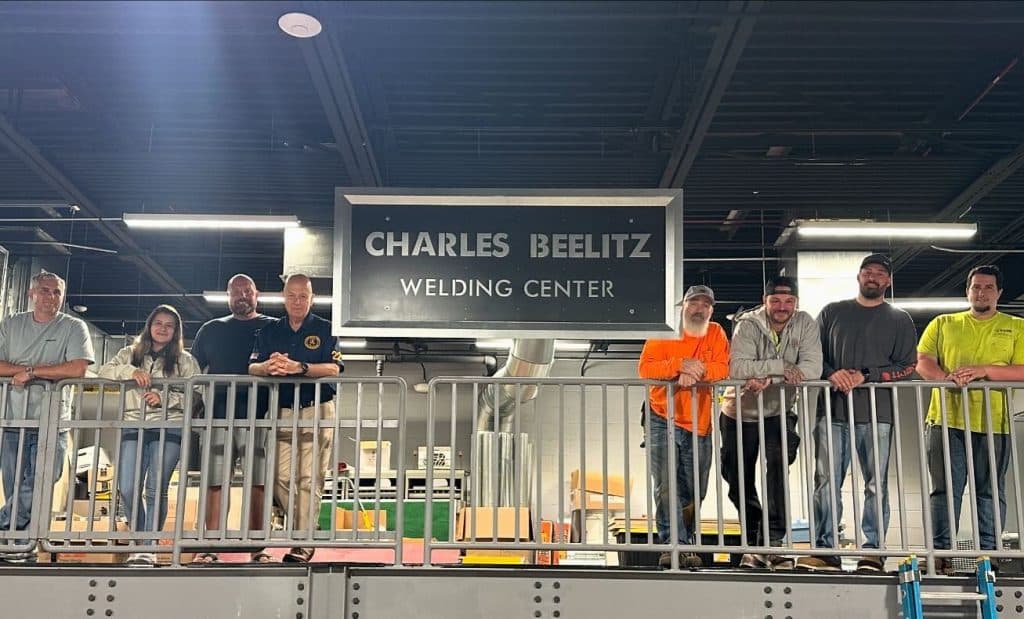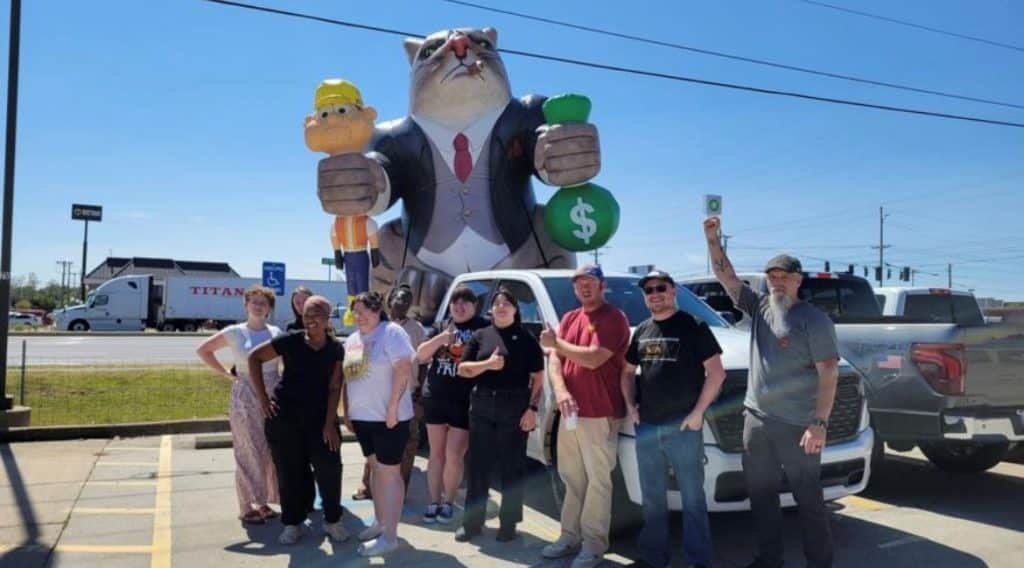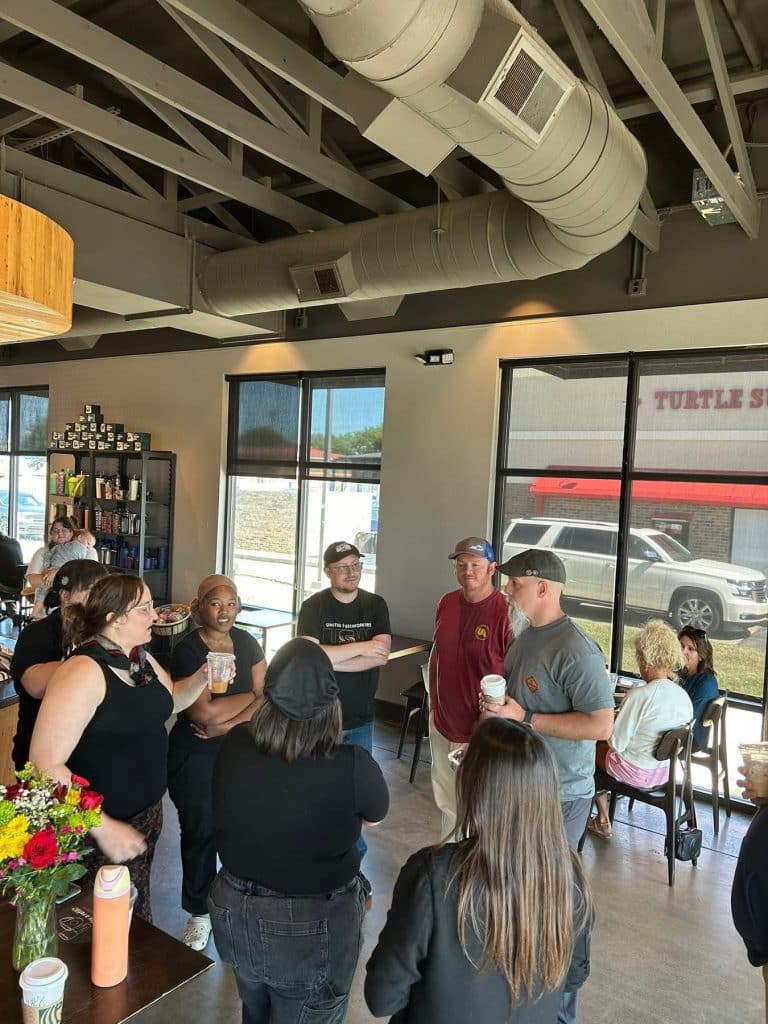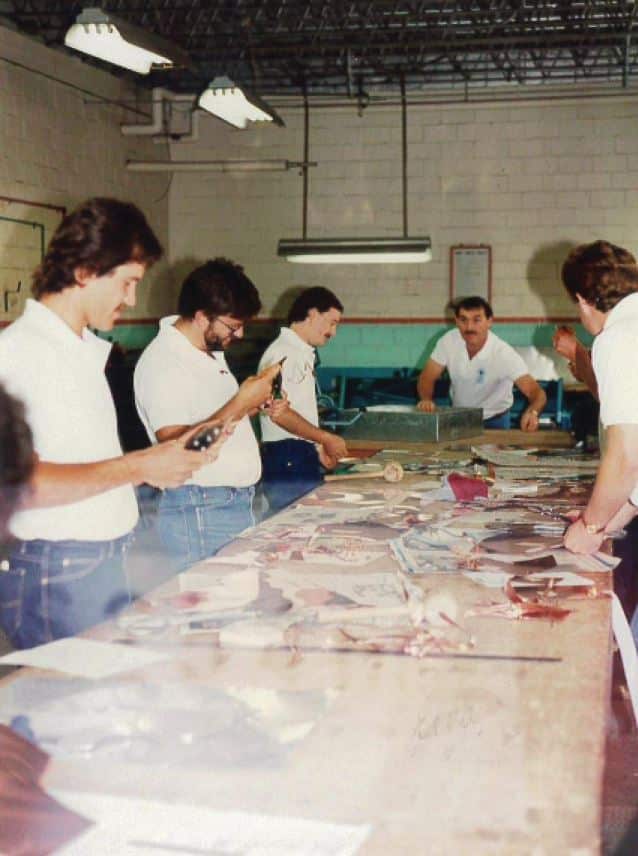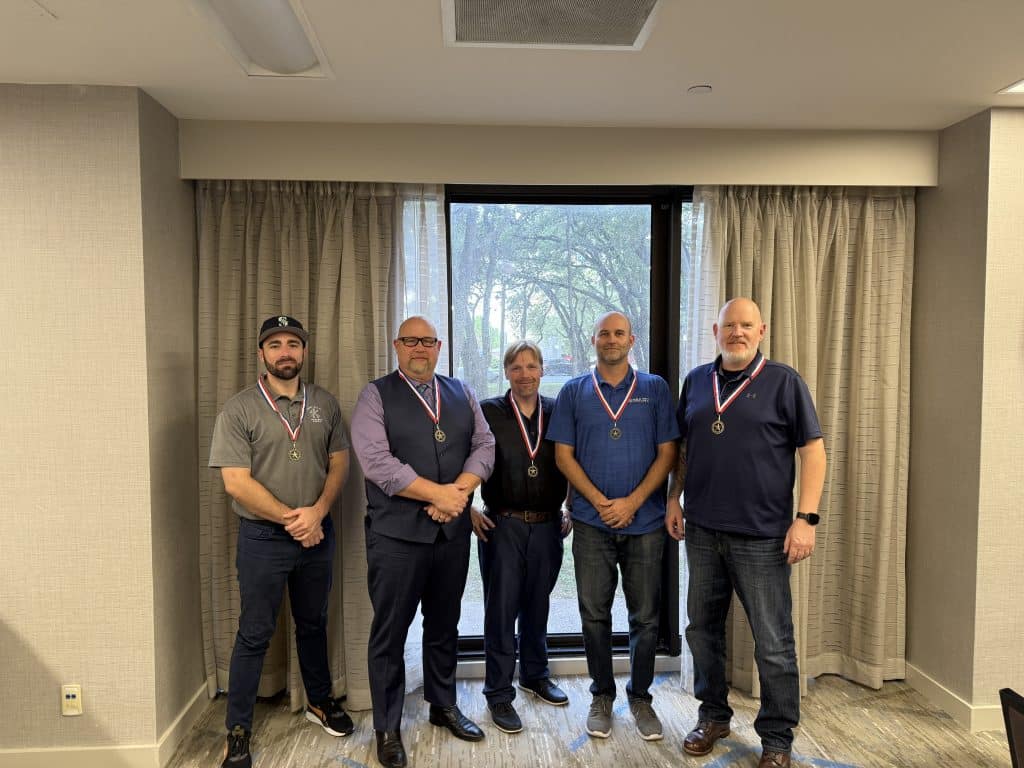In Washington’s Yakima Valley, SMART Local 55 and signatory contractor MBI Construction Services are putting our union’s values into practice: offering young people who have made mistakes a shot at a second chance.
Local 55 Business Rep. Joe Valdez, retired member and former MBI owner Steve Menard, and current owner Joe Menard (Steve’s son) visited the Yakima County Juvenile Justice Center in early August, telling youth in the facility about the benefits and opportunities of a union sheet metal apprenticeship — and giving detainees an opportunity to try out the work via a virtual welder.
“The kids can figure this (equipment) out — it’s computers,” Steve Menard said in an article by Joel Donofrio of the Yakima Herald-Republic. “It’s fun and they score well (on the exercises).”
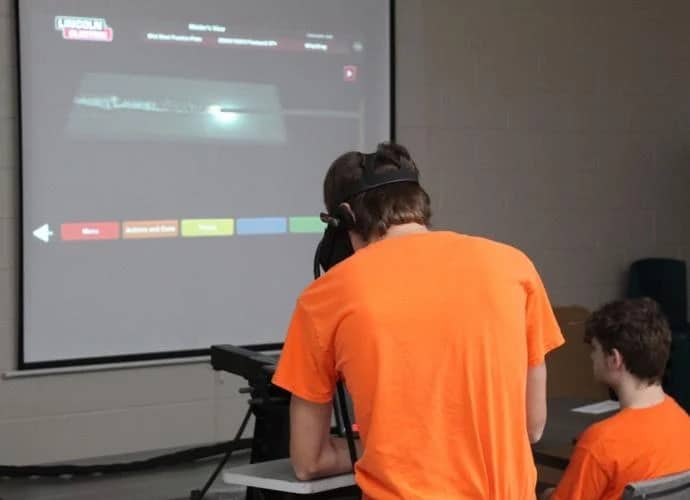
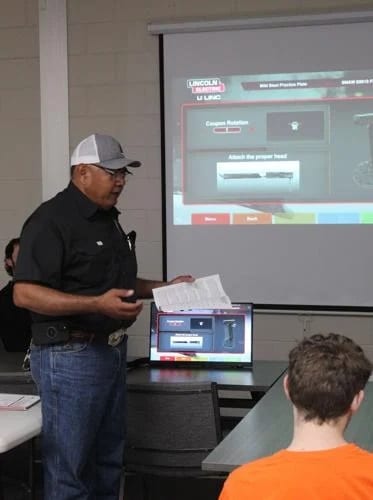
Steve Menard, who founded MBI in the late 1980s, is 78 years old, and since retiring has stayed active in his community — including by visiting the juvenile detention center. During one of his visits, he told the Yakima Herald-Republic, one of the detainees asked Menard about welding.
The light bulb went off for Menard, and he immediately started working with Local 55 on bringing a virtual welder to the center.
“When I first heard (Steve Menard’s) idea, I said, ‘Welding? With flammable stuff? Whoa!,’” Candi Shute, the county’s juvenile court administrator, told the Herald-Republic.
“Then I learned it was virtual, and it was a no-brainer,” she added. “It provides a connection with real job opportunities.”
Local 55 helped Menard bring a VR Tex Transport simulator to the center; he now holds sessions with interested youth once or twice a month, according to the Herald-Republic. On August 6, that session included not just the ability for four young men to try out the virtual welder — wearing the helmet, using the “torch” on a virtual sheet of metal and seeing their work displayed on a projector — but also the opportunity to hear about rewarding careers in the sheet metal industry, straight from the union and the contractor.
Valdez detailed all the benefits of a union apprenticeship — earning while learning, graduating without debt, making more than $40 an hour by your final year as an apprentice, etc. — and overviewed the requirements to apply. According to the Herald-Republic, “Valdez noted he’s made up to $5,000 a week as he has traveled around the world for welding jobs — a figure that prompted a ‘whoa’ from several of the young men.”
Joe Menard, meanwhile, described the workforce demands in the construction industry. As members retire, more opportunities will be available in the skilled trades, providing young people everywhere — including those in the Yakima County Juvenile Detention Center — with rewarding, family-sustaining career options.
That’s why such outreach efforts are so important, not just for potential new members but for local unions and signatory contractors. Market share, union strength and member pensions all depend on our union’s ability to organize, recruit and retain sheet metal workers from every walk of life.
Everyone makes mistakes, including the young people at the Yakima County Juvenile Justice Center. And everyone, including those same young people, deserves a second chance.
The unionized sheet metal industry offers that second chance and more.
“When you’re working a full-time job, making a good living, you don’t have the law coming after you,” Steve Menard told the young men in August.
“There’s lots of older guys in the trades, and they’re retiring,” Joe Menard added. “There’s a big gap there, and lots of opportunities for these kids.”
Based on reporting by Joel Donofrio and the Yakima Herald-Republic. Photo credit: Donofrio, Yakima Herald-Republic.

